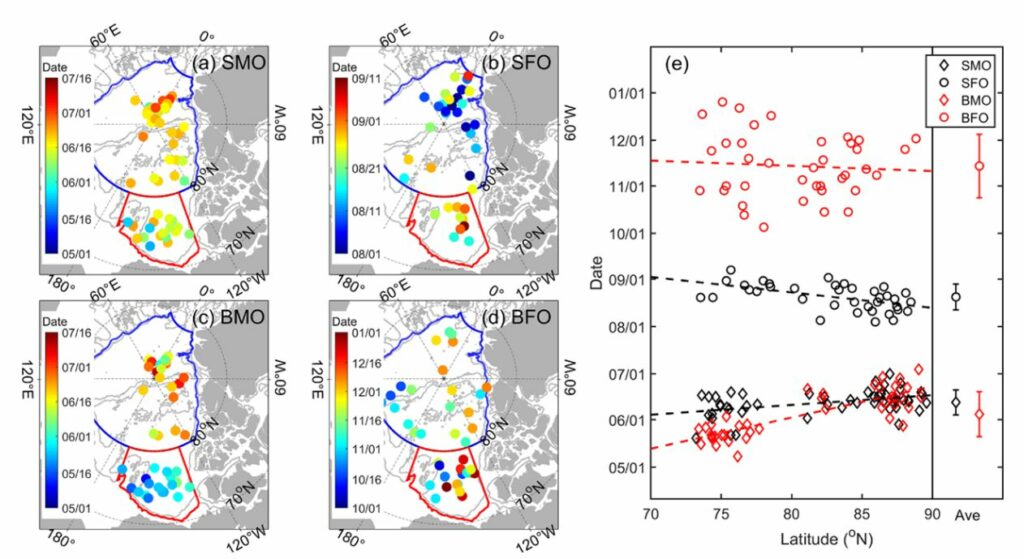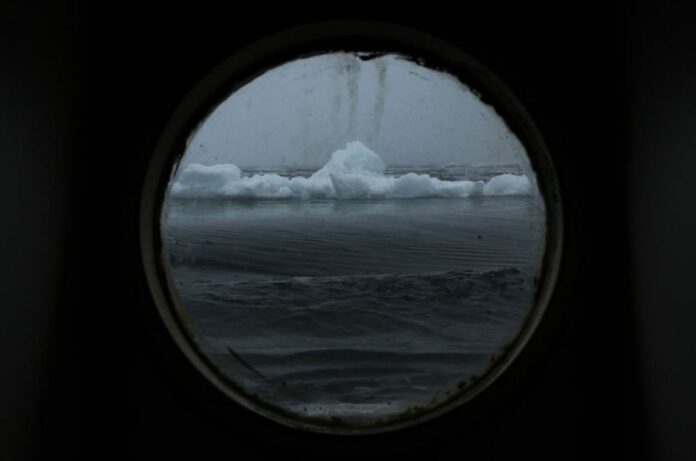Decades of studies indicate that signs of climate change are magnified in the Arctic and that sea ice in this area is susceptible to increases in Arctic warming.
Sea ice significantly influences the heat, momentum, and mass exchanges between the atmosphere and the ocean.
Consequently, the timing of the sea ice melt and freeze onsets, as well as the duration of the melt and freeze seasons, play a significant role in the “heat budget” of the atmosphere-ice-ocean system.
Until recently, the majority of research used remote sensing readings from the surface to determine the Arctic melt and freeze onsets, but they hardly ever looked into the freeze-thaw process below the ice bottom.
An international team of researchers has just published a new study in the European Geosciences Union journal The Cryosphere that explores the spatiotemporal variability of both surface and basal melt/freeze onsets and identifies the mechanisms behind them.
These discoveries could help us better understand how the climate, ice, and ocean are changing as well as how the mass balance of sea ice is changing in the Arctic.
“Thinner ice thickness and thinner snow cover favors earlier basal freeze onset,” says lead author Long Lin, adding, “the ocean plays a cross-seasonal role in regulating the growth or decay of sea ice.”
In the Arctic, researchers discovered that the average base freeze onset was over three months later than the surface.
“Based on synchronous ice and underlying ocean observations,” the team “found the ice basal freeze-up delay relative to the surface, which can be,” according to the author, “attributed to the regulation of heat capacity of sea ice itself and the oceanic heat release from the ocean mixed layer and subsurface layer.”
Although thinner ice typically has a longer freezing season, according to Lin, the overall ice growth still cannot make up for the sea ice loss in the summer.
“From another point of view, the self-regulation of the Arctic sea ice-ocean system will delay the loss of Arctic sea ice.”

The Beaufort Gyre area had the greatest temporal disparity between surface and bottom melt onsets, with basal melt onsets occurring more than half a month sooner than surface.
Additionally, both multiyear ice and first-year ice in this area show a tendency towards basal melt start occurring earlier than expected. This trend may be linked to the earlier warming of the surface ocean brought on by the reduction in sea ice thickness and an increase in sea ice mobility.
These findings provide the first comprehensive analysis of the Arctic sea ice freeze-thaw cycle and its interactions with the atmosphere above and the ocean below.
Additionally, it emphasizes the significance of synchronized, thorough monitoring of the air-ice-ocean system, which clarifies the physical basis of the coupling process.
In the future, the researchers advocate for more extensive and elaborative ice mass balance studies of various ice kinds, as well as simultaneous upper ocean water characteristics data.
They anticipate that this will greatly increase our understanding of the Arctic ice-ocean system.
Image credit: Ozge Elif Kizil/Anadolu Agency via Getty Images
